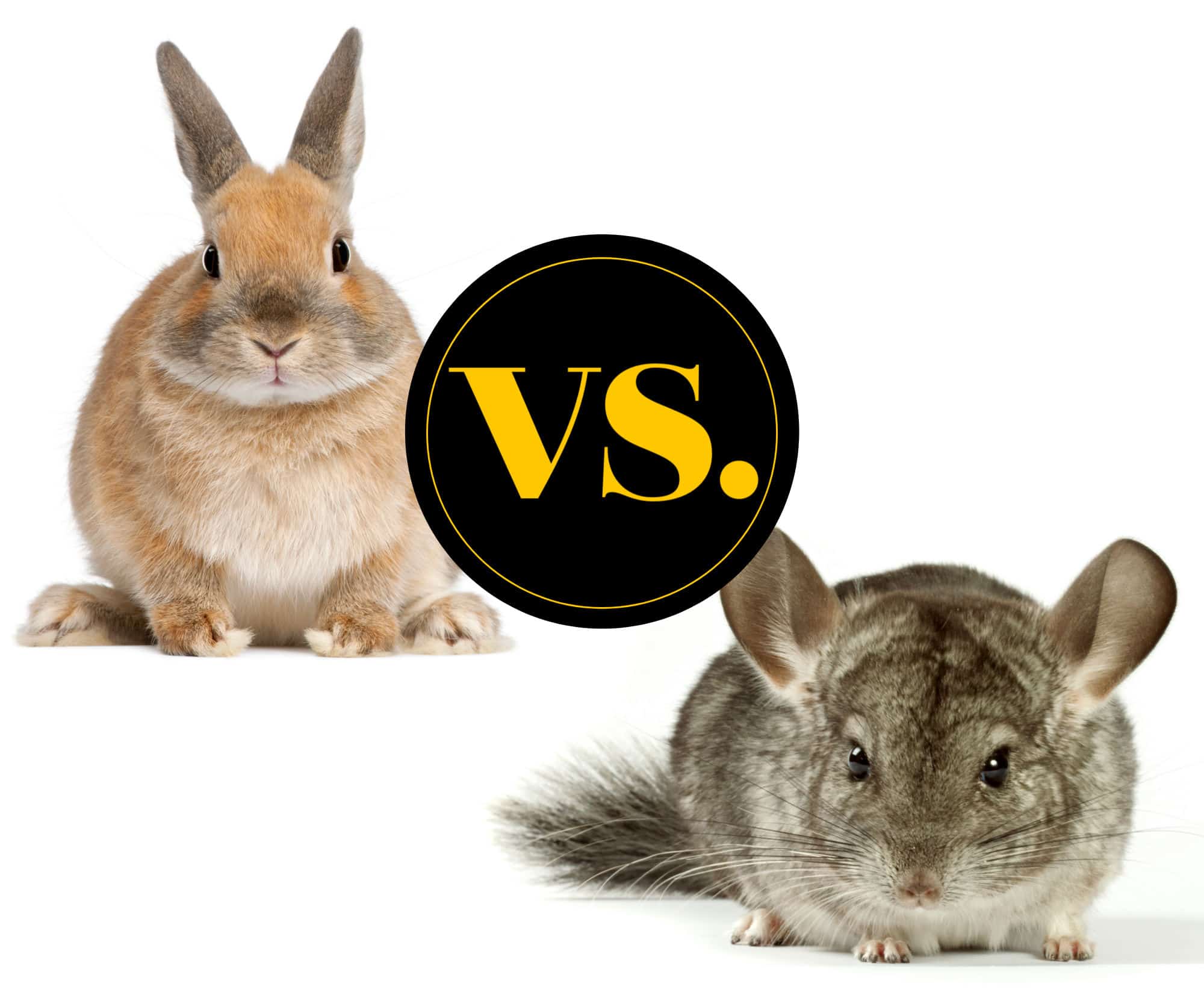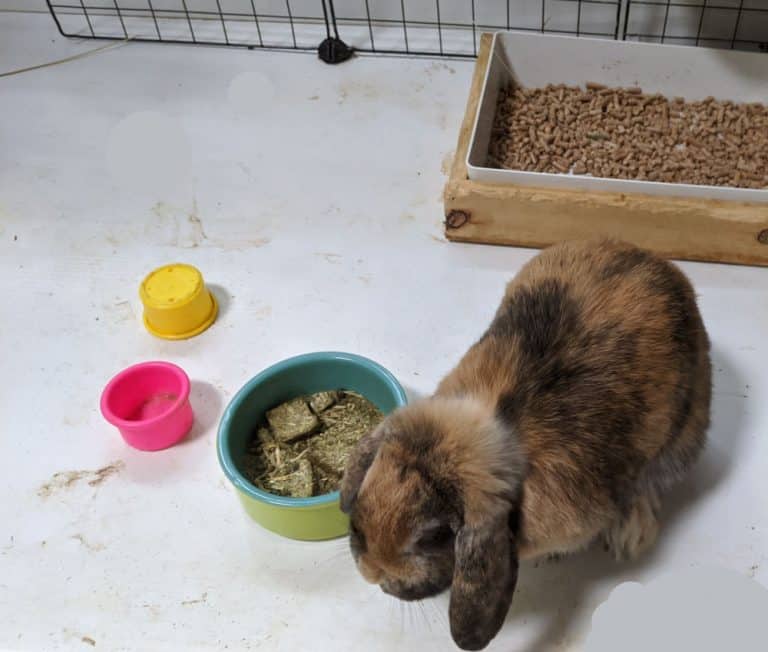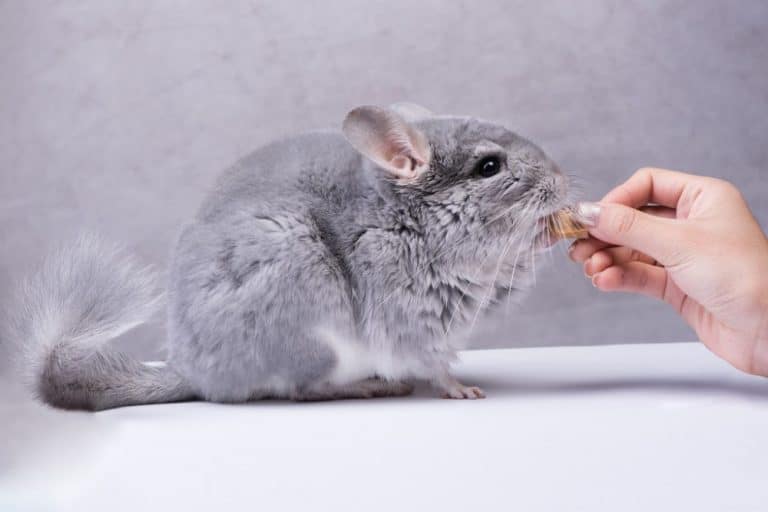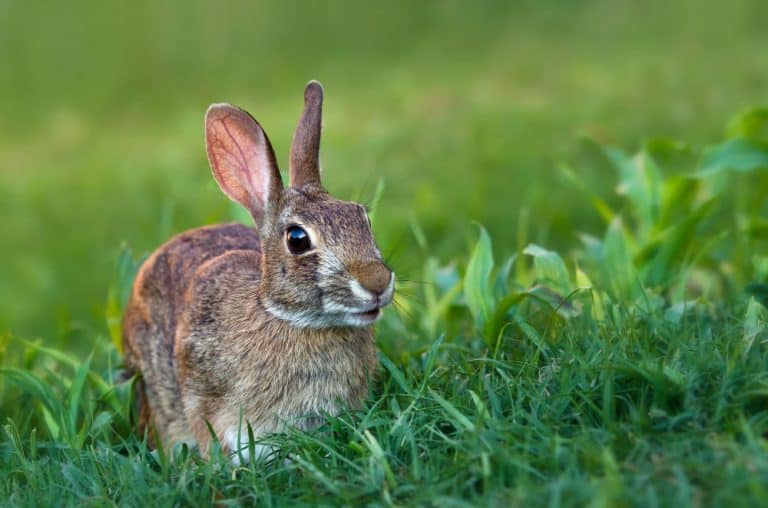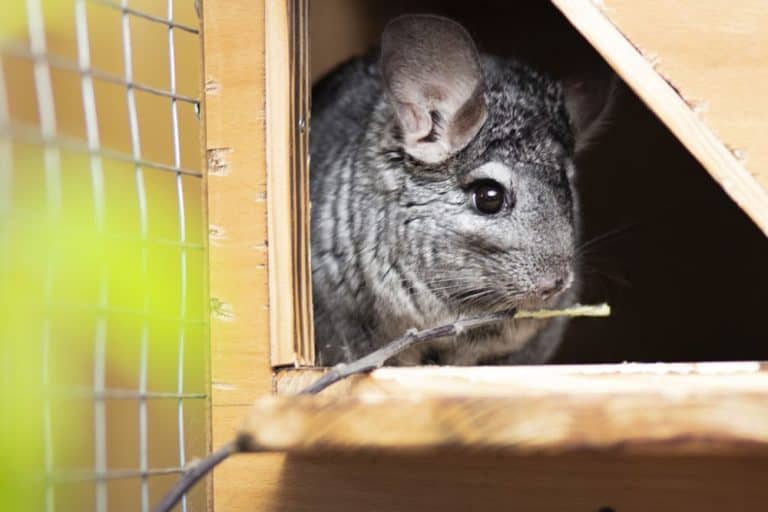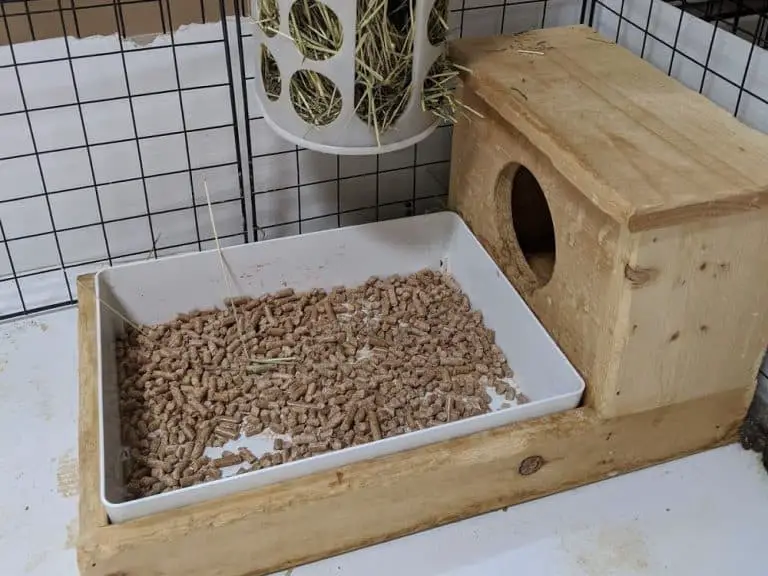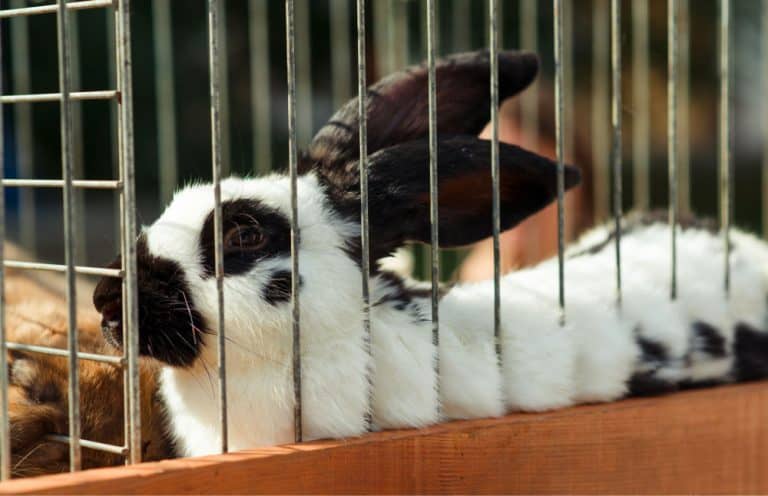Chinchilla vs. Rabbits: Which One Makes A Better Pet?
With big ears and soft fur, you might think that chinchillas and rabbits are very similar. But even though they might have some similar features, they are very different in many ways. And depending on what you are looking for in a pet, one might be the better option for you. So chinchilla vs. rabbits: which one makes a better pet?
Differences Of Chinchilla vs. Rabbits
Before we start talking about care differences, there are fundamental differences to talk about first. Chinchillas are a rodent that comes from the high mountains of Chile and Argentina. Chinchillas have thick, lush fur and come in 30 color morphs. Most notably, pet chinchillas are all the same size and don’t come in different breeds.
But rabbits are not rodents at all. They are actually lagomorphs that originated in Europe and parts of Africa. Rabbits are now found all over the world with multiple breeds, sizes, and colors. With 305 breeds and any combination of 16 colors, the possibilities are endless.
As you can see, when comparing the chinchilla vs. rabbits, we are really talking about two very different species.
Which Makes A Better Pet?
So does the chinchilla or the rabbit make a better pet? Well, to answer this question, you have to weigh the pros and cons of each animal. Looking at the positive and negative sides and seeing how they play a part in your daily life and personalities is the best way to choose a pet. Below we have some pros and cons of each pet and some pros and cons that they share.
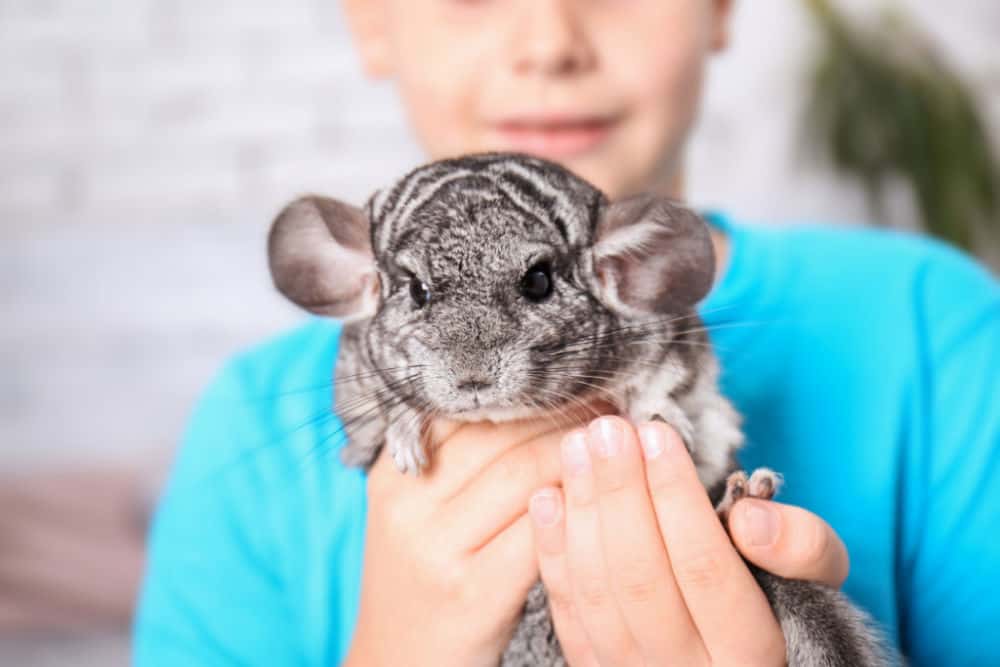
Pros Of Owning A Chinchilla
- First and foremost, chinchillas are incredibly easy to care for. As long as they have the basic needs met, they are happy.
- Chinchillas also come in a variety of colors, and each of them is beautiful.
- Your chinchilla is also very clean. They don’t make huge messes, don’t smell, and don’t get fleas or ticks.
- While chinchillas love to have friends, it is unnecessary as long as you give them enough attention. They are more than happy to bond with you.
- And finally, chinchillas make great pets for older children that understand how to respect an animal’s space.
Cons Of Owning A Chinchilla
- The biggest thing you have to worry about with chinchillas are their sensitive stomachs. You can’t give them just any toy or treat, which we will talk more about later.
- Chinchillas are also not cuddly animals. They enjoy a few chin scratches, but not cuddling up for extended periods of time.
- Also, chinchillas are very temperature sensitive. They quickly get heatstroke if in temperatures above 75 degrees.
- And last, the chinchilla has a taller cage than most animals with lots of levels. If you don’t have room for a tall cage, then chinchillas aren’t the best choice.
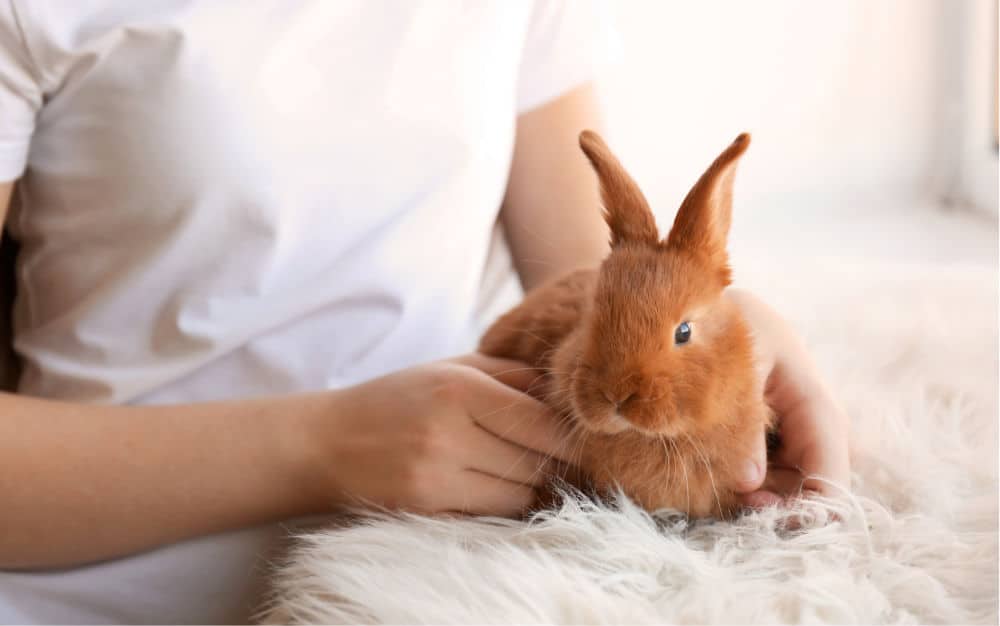
Pros Of Owning A Rabbit
- Rabbits are great pets for kids. Their calm and resilient natures make them excellent options for people with younger children.
- They are also very loyal and seek out the affection of everyone in the house.
- Which brings us to the fact that rabbits are also very social. They love their humans as much as they love their bunny friends.
- You can also train your rabbit to come to their names and short commands.
- Lastly, rabbits are fantastic for people who want an indoor or outdoor enclosure. You could even split the year and have your rabbits live outside in warm seasons, and inside during winter.
Cons Of Owning A Rabbit
- The first con to consider is how much time you have for your rabbits. If you are gone a lot, you will need to get a friend to keep them company.
- If you are planning to get away from large cages, rabbits aren’t it. Rabbits might not need tall cages, but they do need something longer.
- And even with the longest cage, you need to let your rabbits out daily for a little exercise.
- Our last con is their diet. Chinchillas eat a basic pellet and hay diet. Where rabbits also need supplementation with fresh fruits and vegetables to keep healthy.
Pros Of Both
- Both of these pets have a long lifespan. A chinchilla lives 15-20 years while a rabbit lives 10-20.
- Also, either of these pets is easy to clean. You won’t spend hours cleaning a cage every day.
- Easy cleaning is partially due to the ability to litter train both the chinchilla and rabbit.
- Another pro of both is that they are relatively quiet creatures. Besides the occasional noise of play, they don’t make noises.
- And finally, a great pro is that each of these animals comes in a variety of colors.
Cons Of Both
- Although a long life is excellent in theory, it also means a long commitment. Most people don’t realize the years of dedication it takes for these pets.
- They are also very expensive. Everything from getting the pet to setups and monthly care, you will spend a pretty penny.
- Both these pets have large cages. Chinchillas are taller, and rabbits are longer, but they are large nonetheless.
- Vet expenses for both of these pets are also costly. And if either of them gets sick, it usually costs more to treat than the average pet.
- And the last con is that both animals chew everything. So you will need to take extra precautions to keep all furniture and cords safely away.
As you can see, choosing a pet depends more on which one is cuter. Your personality and home life might lead you to like one over the other. Or there are elements out of your control that makes either the chinchilla or rabbit a lousy fit. But, to give you a little more of an idea of how these animals are as pets, let’s talk about basic care needs.
Basic Care
Now that we know how the chinchilla vs. rabbits are as pets, we can talk care. And while both of these animals are entirely different, you might be surprised to find that they have some similar care.
Cages
When looking at a chinchilla vs. rabbits, the most noticeable difference is their cage. A chinchilla needs to have a 3-foot multilevel cage and an additional 2 square feet of space per chinchilla. You can check out this post for our recommended cages for chinchillas for more information. Keep in mind, though, that chinchillas thrive in much larger enclosures. It isn’t uncommon for chinchillas to jump 6 feet in the air to get to new ledges in the wild. A 3-foot cage is a bare minimum, but they love larger ones.
Rabbits, on the other hand, don’t require height and climbing. Instead, you want a long cage with plenty of room for them to run around. Since rabbits come in so many sizes, pinpointing a minimum cage size is a little trickier. Most rabbit owners go by the rule of thumb to have a cage five times a full-grown rabbit’s length. In this post, we’ve rounded up some of the best rabbit cages available on Amazon.
Bedding
The bedding options for a chinchilla and the rabbit are the same. Many rabbit and chinchilla owners opt to use fleece bedding. Fleece is an easy and cheap DIY that you can wash and reuse. And since it is a DIY project, you can cut them to fit any cage size you have.
For chinchillas, it is easiest to make them into pillowcase styles for the levels. And for rabbits, you can sew layers of fleece into pads. But if you aren’t a crafty person, there are many sellers on Etsy that can customize your needs.
There are other bedding options, as well. If your cage has deep pans for loose litter, you can use either aspen or pine shavings. The only downside to these is that they are a little dusty, and you have to replace them often. But if your cage doesn’t have deep pans, loose bedding will end up all over the floor.
Litter Training Supplies
We mentioned earlier that chinchillas and rabbits could both be litter trained. While it’s not 100% necessary to litter train your pets, it makes clean up 100% faster. You won’t spend so much time trying to scrub urine off the cage, and it saves money on bedding.
Remember how we mentioned that chinchillas have a sensitive digestive tract? And how they chew everything in sight? The combination of these prevents chinchillas from having anything plastic in their cage, including litter pans. The best litter pan you can get is glass Pyrex dishes. You can also use small metal pans as long as they are rust-proof.
And for litter, most chinchilla owners love pine shavings. Pine is absorbent, safe, and odor-reducing, which are all great options. But you can also use critter litter, pine pellets, or fleece pads if you want a reusable alternative.
Rabbits are not as picky with their litter pans. You could use a cat litter pan or litter boxes made for rabbits or ferrets. As for the litter, wood shavings, pine pellets, paper pellets, or fleece pads are all great options. You will want litter pans in the cage and around the house during free-roam times.
You might be wondering to yourself, how do I litter train? Lucky for you, training rabbits and chinchillas is incredibly easy. The first step is to watch your pet to see what their favorite pee corner is. Most small pets choose a corner that they favor more than the others to do their business in. Once you find this corner or corners, you are golden.
Now all you have to do is place the litter box in the pee corner with a few droppings. Every time you notice your pet trying to go to the bathroom, pick them up, and put them in the box. Some pets will try to switch corners, and that’s ok. Just change what corner you put the litter box in until they finally get what you are asking. Most chinchillas and rabbits are potty trained within two weeks.
Diet
Both rabbits and chinchillas have a staple diet of pellets and timothy hay. Timothy hay is high in fiber and makes up the bulk of your pet’s diet. It should be provided all day every day. Any time you see that the hay rack is empty, fill it on up. It’s impossible to feed too much timothy hay for these pets.
The next part of the diet is pellets. Chinchillas and rabbits have very particular dietary needs. Chinchillas need chinchilla food, and rabbits need rabbit food. Getting pellets that are specific to the species you have is very important. Without a species-specific food, your pet is prone to malnutrition and disease.
The best chinchilla diets are alfalfa-based pellets. No seeds, nuts, or dried pieces of fruit should be in the brand that you pick. Since chinchillas have such a sensitive stomach, treats like these can’t be digested quickly and could cause medical issues. Under no circumstances should you ever feed any fruits, vegetables, seeds, or nuts to your chinchilla.
Rabbits also need a pellet, but theirs is timothy hay-based. While getting a pelleted food with bits of treats in it won’t be detrimental to your rabbit, it should be avoided. Treats inside of pelleted foods will make your rabbit a picky eater. They will eat all of the yummy treats and leave everything else. Over time your rabbit will become overweight and sometimes even become diabetic.
If you are looking for some great chinchilla and rabbit brands, we recommend two brands more than others. Both the Oxbow and Mazuri brands have fantastic species-specific pellets. These brands stand by their products and provide the best diets to your pets.
Exercise
Many people love the idea of letting their rabbits have free-roam time. Free-roaming is a great way to give your rabbits a little exercise. Most people even recommend that rabbits have free-roam every chance that you can spare for them. With a bit of rabbit-proofing, it can be completely safe. Blocking all cords, under furniture, and anyway that rabbits can hurt themselves makes roaming the home fun.
You might wonder if this is possible for chinchillas. Unfortunately, chinchillas are not as hearty as rabbits. Chins tend to overexert themselves into heat exhaustion. Not to mention they easily get hurt and spooked into dangerous situations. Most chinchillas do great with no time outside the cage as long as they have fun cages. But if you want a safe spot for your chinchilla to play, you can get a playpen extension to attach to your cage.
And let’s not forget mental exercise. No matter if you get a chinchilla or rabbit, both of them are intelligent creatures. They will need toys, chew sticks, and a little variety every now and then. Chinchilla toys should be made of chin safe woods and changed out often. You can even change up where the cage levels are for more variety.
Rabbits also need wood toys to chew on, but they can have a little more freedom. Rabbits are known to love tunnels, balls, and things that jingle. They love to play with cat toys and even love a short training session to keep their minds sharp.
Grooming
Most rabbit owners don’t have to groom their rabbits much at all. If you have multiple rabbits, they usually help each other groom. And as long as you keep the cage and litter pan clean, you won’t have to wash your rabbits. But if you do, there are small animal pet shampoos on the market that are gentle and smell amazing.
Chinchillas though require a little more work. Chinchillas have such thick fur that their skin could develop yeast or fungal infection if they were to get wet. Instead, chinchillas get a dust bath of volcanic ash. Dust baths wick away moisture and work like dry shampoo on humans. If you live in a humid environment, you will need to give your chinchilla a dust bath at least three times a week. But in drier climates, you might only need it once a week.
Vet Care
And finally, we come to vet care. When you look at a chinchilla vs. rabbits, vet care is equally as expensive. You will need to find an exotic pet for both of these pets, but finding a rabbit specialist is often easier. Your pet will need at least one check-up a year, but two is ideal. During this check-up, your vet will check for common illnesses.
Dental issues are a common health problem in both chinchillas and rabbits. In some cases, these pets can have teeth that grow too fast. It can deform the jawline and even can make the teeth grow into the jaw. Your vet will have to clip the teeth to keep them from causing too much pain. Oral health is the most important thing to watch for in both of these animals.
What Do You Think?
Chinchilla vs. rabbits is a hard decision. If you prefer a pet that isn’t too sensitive and does well in families, rabbits are probably a better choice. Or if you prefer a pet that is a little more exotic and you don’t mind special care, a chinchilla is the better option. As you can see now, these pets have little in common besides cute noses and long ears. And choosing one might be more complicated than what you think.

